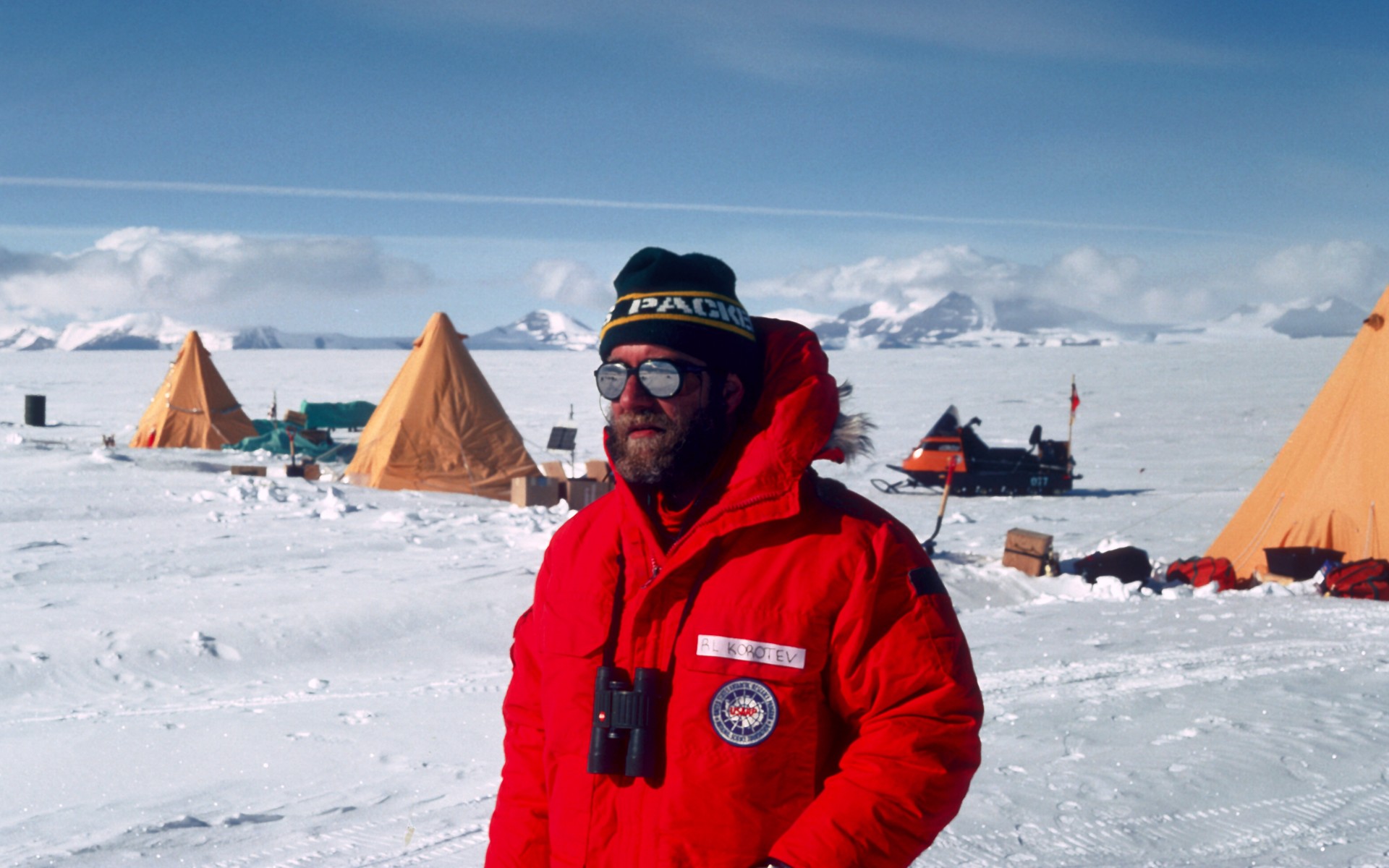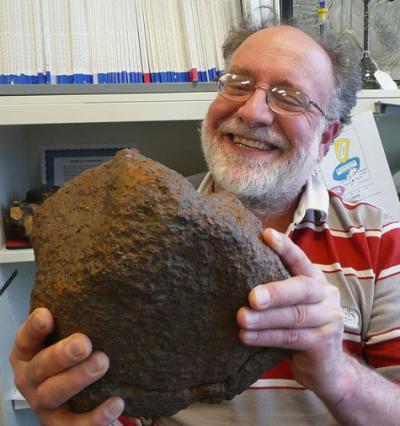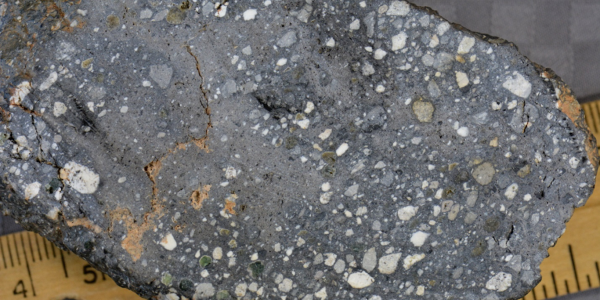WashU recently recognized Randy Korotev's dedication to the university and his field of research by awarding him emeritus status.

Randy Korotev, now a Research Professor Emeritus of Earth, Environmental, and Planetary Sciences, as well as an emeritus fellow of the McDonnell Center for the Space Sciences, both in Arts & Sciences at WashU, has made extensive contributions to lunar meteorite science and pioneering developments in the field. Among his numerous achievements, one that stands out is the creation and maintenance of an exhaustive online meteorite database, which has become an essential resource for researchers, collectors, and enthusiasts worldwide.
This marks a new chapter in a career that has been influential in advancing our understanding of lunar geology. His journey began with a passion for geochemistry during his undergraduate years at the University of Wisconsin in 1969 when he was able to study moon rocks brought back to Earth by Apollo 11. For approximately the first 25 years of his career, he concentrated on Apollo samples, particularly lunar “soils,” and he continues to work with them. His latest first-author Apollo paper was written in 2022, after his retirement. Over the decades, Korotev developed specialized laboratory techniques to analyze the elemental compositions of lunar samples with unparalleled precision. His work has significantly deepened the scientific community's knowledge of lunar soils and rocks, including complex rocks called impact breccias—those rocks formed from meteoroid and asteroid impacts that have broken apart, mixed, and fused various lunar rocks through heat, pressure, and sometimes melting.

The first lunar meteorite was recognized in 1982, marking a significant milestone in the field. Throughout his career, Korotev has amassed data on approximately 8200 lunar samples, 72% of which were Apollo samples. More recently, he has focused on lunar meteorites discovered on Earth. These efforts are particularly important as no new samples have been returned from the Moon since 1976, with the exception of China's recent Chang'e-5 and Chang'e-6 missions. With over 700 recognized lunar meteorites, all of which were found in desert regions, Korotev’s analysis has been pivotal in identifying these extraterrestrial rocks and understanding their compositions. He has analyzed the composition of nearly half of all lunar meteorites, although that fraction was much greater before his retirement since 318 have been reported in the last five years. The primary goal of his work is not solely to categorize the compositions but to interpret what these compositions reveal—particularly the differences among the meteorites—about the geology of the Moon.
One of Korotev's most notable contributions to the field is his development of a comprehensive online meteorite database. This resource offers detailed information on meteorites and serves as an invaluable educational tool for scientists, meteorite collectors, and curious amateurs, alike. The database is divided into two separate websites, each containing over 100 pages of content.
The first website focuses on lunar meteorites and includes "The List" of known meteorites, organized both by composition and in alphanumeric order. This list is highly useful for researchers and enthusiasts alike, especially since only about 0.1% of known meteorites are from the Moon. In Korotev's opinion, this collection of photographs of lunar meteorites is the most important aspect of the site, as there is no equivalent resource elsewhere. Many of these photos are ephemeral in that they appeared only briefly on meteorite dealers' web sites and cannot be found anywhere else today.
The second website is dedicated to meteorite identification and is aimed at amateur enthusiasts who aspire to find meteorites. It features an extensive photo gallery of over 1,000 objects misidentified as meteorites, aptly termed "meteorwrongs." Each entry includes detailed explanations and visual aids to help users understand why these rocks are terrestrial in origin.

The database has drawn immense interest from a broad audience, including professional researchers, amateur collectors, and curious members of the public. Korotev’s ability to communicate complex scientific information accessibly has made the site a critical tool for those seeking to verify potential meteorite findings. He receives thousands of inquiries annually, and provides expert analysis and educates individuals on the distinguishing features of genuine meteorites versus common terrestrial rocks. The first inquiry he received was in 1999. In 2024, he was contacted 4057 times by 1308 different persons from at least 80 countries.
Korotev seldom actually “certifies” a meteorite, as that is an expensive laboratory process. Instead, people send him photos, but it is impossible to identify a meteorite from a photo alone. Over 99% of the time, he informs people that the rock in the photo does not look like a meteorite, explains why, and directs them to relevant "meteorwrong" pages with numerous photos.
Only rarely does a rock appear as though it might be a meteorite. In such cases, he suggests that they get it tested, which comes at a cost to the sender. Korotev then interprets the analytical results. As he noted on one of his websites in July 2022,
"I have received the results of analyses of 672 samples from Actlabs and more than 140 samples from other labs. Only nine of the rocks have been meteorites: six ordinary chondrites, two iron meteorites, and one pallasite."
Korotev's dedication to public outreach complements his scientific achievements. He has become a trusted figure for researchers and collectors needing expert validation of their samples. Meteorite collectors, in particular, have sought his expertise to authenticate their specimens. These rocks are prized not only for their scientific value but also for their rarity and novelty.
Although he is retired now, Korotev remains actively involved in the scientific community. His commitment to educating the public about meteorites continues to inspire future generations of scientists and enthusiasts. The comprehensive database he established will endure as a testament to his significant impact on lunar science and his tireless efforts to expand public understanding and engagement in the field.
In recognition of his contributions over the years, Korotev was named the recipient of the 2022 Service Award by the Meteoritical Society. This honor reflects his outstanding contributions to the classification of lunar meteorites, his creation and operation of the "go-to" website for lunar meteorites and literature on lunar science, and for his extensive public outreach and education efforts in meteorites.
Korotev’s emeritus status and his renowned meteorite database highlight a career marked by scientific excellence and a passion for sharing knowledge. His pioneering efforts have not only advanced lunar geology but have also made lunar meteorite science accessible to a global audience.
Header image: A large sawn face of meteorite NWA 10404. Photo credit: Randy Korotev




